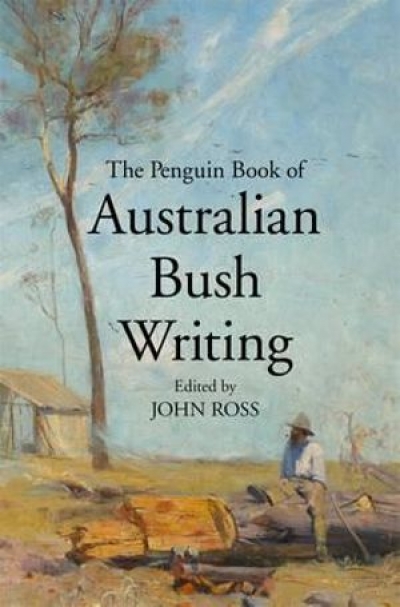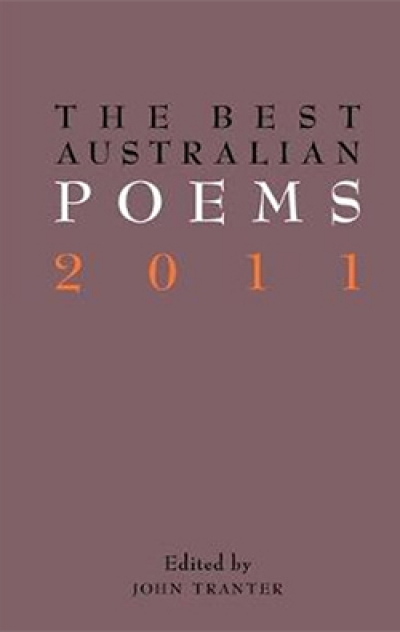Anthology
f ourW twenty-two is an initiative of the Booranga Writers’ Centre in Wagga Wagga. This current edition features short stories and poems by (predominantly) Australian writers. Some of these writers are prominent names; others are relatively unknown.
... (read more)In his polemical Introduction, Les Murray notes that Quadrant was founded sixty years ago by poet James McAuley, the ‘stern formalist’ who ensured that poetry occupied a prominent place in the magazine. Poetry has continued to be central to Quadrant, its profile not waning under Murray’s stewardship as ...
... (read more)Young Poets: An Australian anthology edited by John Leonard
John Leonard’s anthology of young Australian poets, showcasing the work of an exclusive septet, comes hot on the heels of Felicity Plunkett’s more accommodating Thirty Australian Poets (reviewed by Fiona Wright in the December 2011–January 2012 issue of ABR). Young Poets: An Australian Anthology ...
... (read more)The Penguin Anthology of Twentieth-Century American Poetry edited by Rita Dove
‘To choose the best, among many good,’ says Dr Johnson in his ‘Life of Cowley’, ‘is one of the most hazardous attempts of criticism.’ The truth of this maxim is borne out nicely in the controversy surrounding – or perhaps emanating from – Rita Dove’s new selection of twentieth-century American poetry. That The Weekend Australian should have felt moved to comment on the situation (Frank Furedi, ‘Culture War Highlights the Banal Message of Politically Sanctioned Art’, 7–8 January 2012) is a good indicator of just how hot the issue has become. As a result, it is no longer possible simply to review the book; you have to review the controversy as well. The literary world is always set a-twitter by dust-ups between luminaries, and this one is a doozy: it features the former Poet Laureate Rita Dove, defending herself against the redoubtable literary scholar and critic Helen Vendler. Vendler attacked Dove’s anthology (and Dove herself) in the New York Review of Books of 24 November 2011, and Dove returned the favour in the 22 December issue. Thereafter, the controversy spread like algae bloom in the press and blogosphere.
... (read more)The Penguin Book of Australian Bush Writing edited by edited by John Ross
Twinings has recently introduced a new tea flavour called ‘Australian Afternoon Tea’. On the box is an image of kangaroos silhouetted against a red rocky background, which is a sort of amalgam, or perhaps amalgum, of Uluru and Kata Tjuta. This book is like that tea – more Australian than Australia, in a packaged, labelled form that relies heavily on recognition, stereotype, and sentiment. I have to admit that when I started reading the Introduction I thought it might be a parody, but perhaps that just shows jaded sensibilities. Nevertheless, I am not convinced that as ‘Australians we carry a certain vague longing for the bush’. Perhaps I am not drinking the right tea.
... (read more)‘The Useless Mouths’ and Other Literary Writings by Simone de Beauvoir, Margaret A. Simons and Marybeth Timmermann (editors)
Let the potential reader be warned from the outset: the editorial perspective of this anthology of Simone de Beauvoir’s literary writings is disturbingly unsettled. If the intended audience is the ‘Beauvoir scholars’ alluded to in the jacket blurb, one cannot but imagine their irritation at the scores of quasi-Wikipedic notes covering almost every person mentioned in the text, and providing such information as ‘Brittany is a region in northwestern France with a distinct Celtic heritage’, or ‘The Champs-Elysées (Elysian fields) is a famous boulevard in Paris’. If the target is, rather, a culturally tabula rasa (freshman student?) readership, then the introductory essays for the Beauvoir texts are surely pitched too high, for many of them are scholarly, sophisticated, and thought-provoking. To account for these discrepancies would require an article of its own. Even then it would be hard to explain an editorial position that allows Proust to be presented as a ‘French modernist author best known for his monumental work, À la recherche du temps perdu (Remembrance of Things Past or In Search of Lost Time) characterised by an exploration of memories through free association reflecting Proust’s interest in Freud’s analytic method’.
... (read more)With the recent focus on new anthologies in the Australian poetry community firmly placed on UNSW Press’s Australian Poetry Since 1788 (edited by Geoffrey Lehmann and Robert Gray) and the publication of two anthologies dedicated to the work of younger poets (UQP’s Thirty Australian Poets and ...
... (read more)The Penguin Book of Australian War Writing edited by Mark Dapin
War is one of the great paradoxes of Australia. Why should a people occupying a continent so far from the world’s trouble spots have spent so much of their history dying in often distant wars? It is one of the questions that drew me to the study of Australian history. I am little the wiser after reading this collection of Australian war writing. This is partly because editor Mark Dapin is intent simply on providing a range of Australian literary responses, and a few not so literary, to the experience of war.
... (read more)In Other Worlds: SF and the Human Imagination by Margaret Atwood
As contemporary author fan bases go, Margaret Atwood’s must be among the broadest. She is read at crèches, on university campuses, and in nursing homes. Feminists, birders, and would-be writers jostle to see her perform at literary festivals. Yet despite an Arthur C. Clarke Award and, in her own words ...
... (read more)Thirty Australian Poets edited by Felicity Plunkett
Although it has been almost half a century since 1968, a year readily mythologised in Australian poetry, the so-called Generation of ’68 are still the most talked-about contemporary poets. There have been few attempts to define the next generations of poets. Forty-three years is a long definition of what might be deemed ‘contemporary’.
... (read more)









